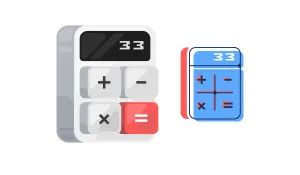You hear it on the news every single night: "The market was up today" or "The market took a big hit."
But what is "the market"?
More often than not, they are talking about the S&P 500. It is the single most important number used to measure the health and performance of the entire U.S. stock market.
But what is it, really? And how does it work?
What Is the S&P 500?
At its heart, the S&P 500 is just a list.
- "S&P" stands for Standard & Poor's, the company that created and manages the list.
- "500" stands for the 500 largest and most important U.S. companies on the list (think Apple, Microsoft, Amazon, Google, NVIDIA, Johnson & Johnson, etc.).
When you hear that the "S&P 500 is up 1%," it means that if you averaged the stock price movements of all 500 companies on that list, the average went up by 1%.
An "index," like the S&P 500, is just a "measuring stick." It's like the "Top 40" for music—it's just a list that tracks what's most popular. The S&P 500 tracks what's most valuable.
How It Really Works: The "Seesaw" Analogy
This is the most important part to understand: Not all 500 companies are treated equally.
The S&P 500 is a "market-cap weighted" index. "Market cap" is just a fancy term for a company's total value (its stock price multiplied by all its shares).
Here’s the simple seesaw analogy:
Imagine the S&P 500 is a giant seesaw.
- On one side, you have Apple, a massive company worth over $2.5 trillion.
- On the other side, you have a smaller company on the list, worth about $15 billion.
If the $15 billion company's stock goes up 10%, the seesaw barely moves.
But if Apple's stock goes up just 1%, its massive weight slams that side of the seesaw down.
This is how the index works. A 1% move in Apple or Microsoft has a much bigger impact on the S&P 500's final number than a 1% move in one of the smaller companies on the list.
So, when you look at the S&P 500, you are mostly seeing the performance of the 50 biggest companies (like Apple, Microsoft, Google, and Amazon).
Why Is the S&P 500 So Important?
There are two big reasons this list matters to you:
- It is "The Market." Because it's weighted and covers 500 huge companies across all industries (tech, healthcare, finance, etc.), it's the best single snapshot of the entire U.S. economy.
- It's the Benchmark. This is the "score to beat." When you start investing, you will measure your own performance against the S&P 500. If your portfolio went up 8% in a year when the S&P 500 went up 12%, you know you actually "lost" to the market.
How Do You Invest in the S&P 500?
You can't buy the "index" itself—it's just a list with a number.
Instead, you buy an S&P 500 index fund. This is an ETF or a mutual fund that is designed to perfectly copy the list. The fund's job is to buy all 500 stocks in the exact same weights as the index.
When you buy just one share of an S&P 500 index fund, you instantly own a tiny piece of all 500 of the biggest companies in America.
It is the most popular, simple, and effective way to start investing and be instantly diversified. Common examples you'll see are:
- ETFs (Exchange-Traded Funds): VOO (Vanguard), SPY (State Street)
- Mutual Funds: FXAIX (Fidelity)
For most people (and beginners), buying one of these funds is the perfect way to "buy the market."






